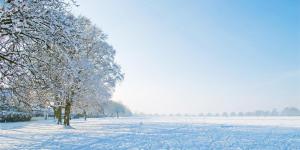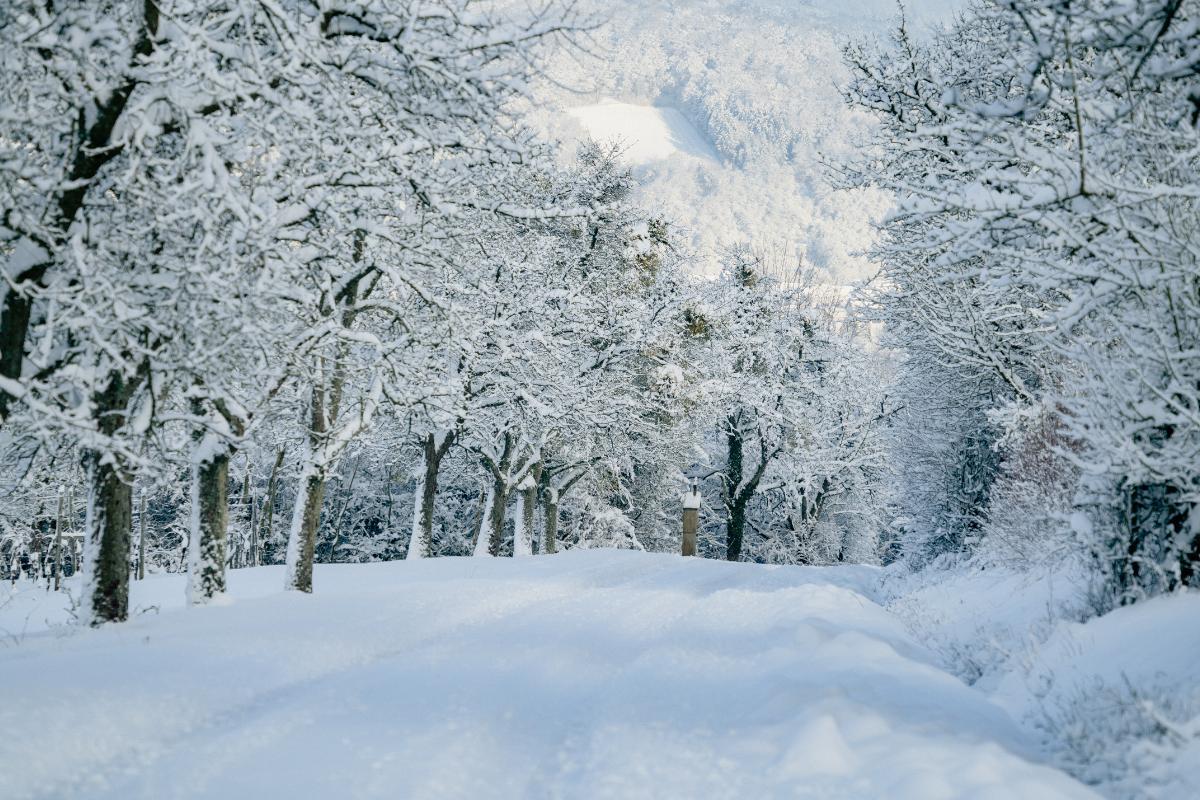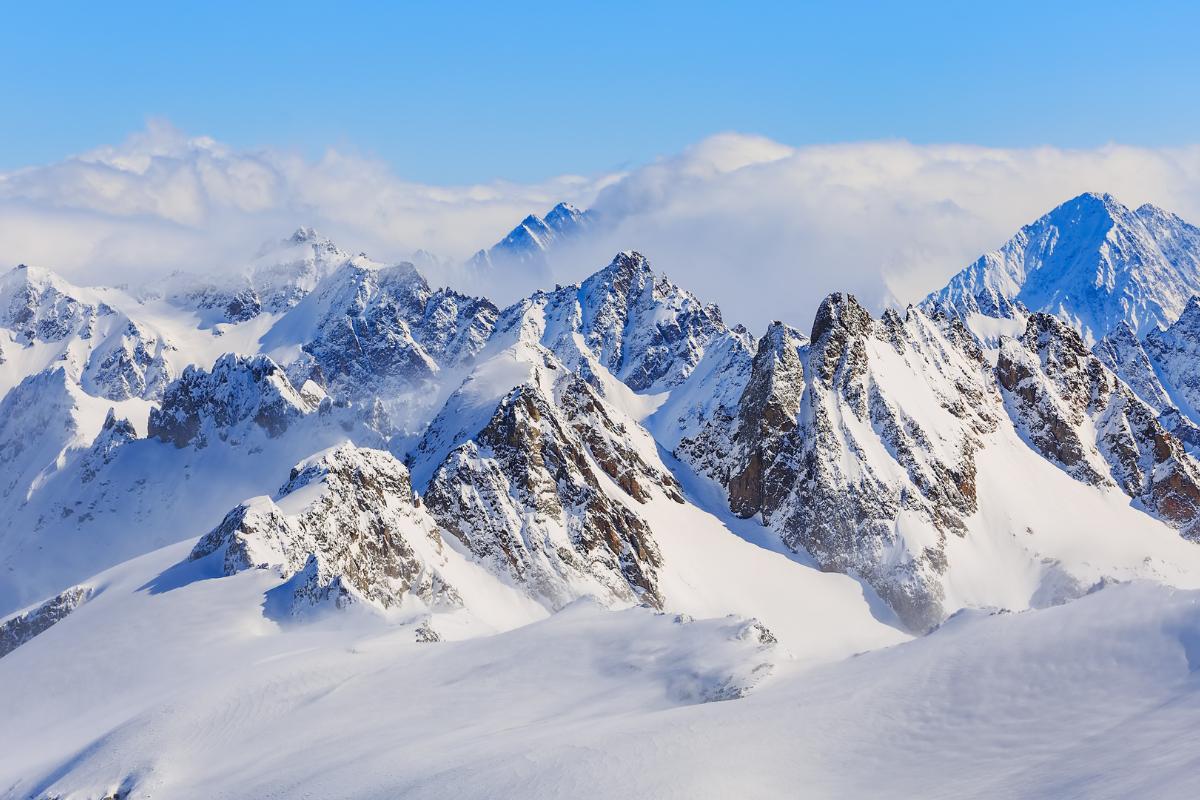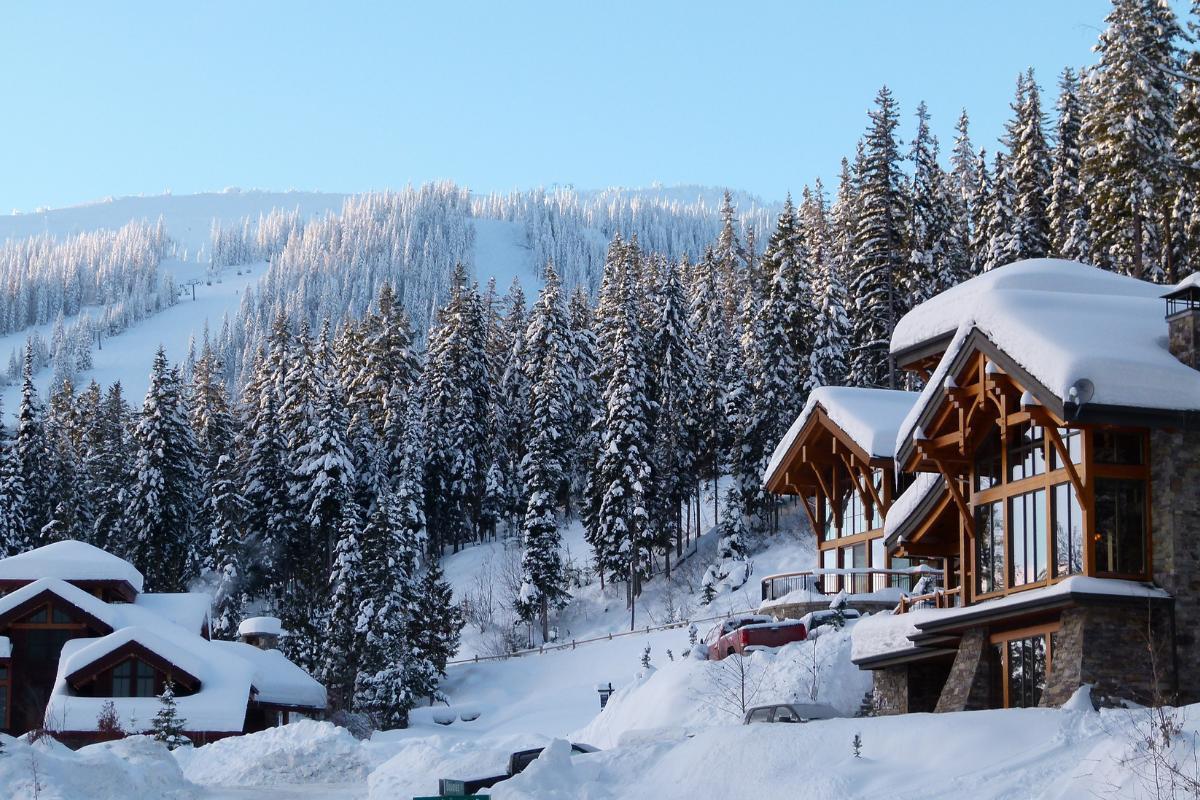Why Is Snow White but Ice Is Clear?


Why are snowflakes white while ice cubes are clear? It's all about how their structures interact with light. Snowflakes' complex, airy crystals have countless surfaces that scatter light in all directions (diffuse reflection), making them appear white. Ice, with its tightly packed structure, allows light to pass through with little scattering, making it transparent.
This article by thedailyECO explores why snow is white and ice is clear, and how physics and crystallography create such different appearances from the same molecule.
Why is snow white?
Light interacts with matter in three ways: reflection, absorption, and transmission.
These interactions determine the colors and other visual properties we see. Snow's white appearance is a result of diffuse reflection.
Snowflakes are made of ice crystals (H₂O) separated by air pockets. These pockets create numerous surfaces that reflect and refract light. When sunlight hits the snow, it bounces between these crystal surfaces many times. This is diffuse reflection. Because it's diffuse, the light is scattered in all directions.
Importantly, all wavelengths of light are scattered equally, which is why snow appears white. Think of it like a prism, where snow effectively recombines all the different wavelengths of light back into white light by reflecting them without changing their colors.
Temperature and humidity influence how these interactions happen by affecting how the crystals form. In humid conditions, the crystals grow larger and trap more air, which increases the light scattering. In colder, drier conditions, the crystals are more compact and have different reflective properties.
The same principle explains why other things look white. Salt, sugar, and powders appear white because their crystal structures scatter light in the same way as snow. In contrast, colored objects absorb some wavelengths of light while reflecting others. A blue object, for example, reflects blue light but absorbs red and yellow light.

Why is ice clear while snow is white?
Ice and snow, both frozen water, interact with light differently due to their structure. In ice, water molecules pack tightly together in a regular crystal pattern. Light travels through this uniform structure with minimal interference, making ice transparent. But several factors can affect ice clarity:
- Air bubbles: when water freezes rapidly, it traps air bubbles. These bubbles scatter light like snow's air pockets, making ice cloudy.
- Formation speed: slow freezing allows molecules to align neatly, creating clear ice. Fast freezing leads to irregular crystal patterns and trapped air.
- Impurities: minerals, salts, or organic matter in water deflect light as it passes through ice, reducing clarity.
Professional ice makers use slow freezing and filtered water to create crystal-clear ice. They often freeze water from one direction, pushing impurities and air bubbles to one side that can be removed.
Because ice is tightly packed and snow is made of loose crystals with air between them, light can pass through ice but is reflected by snow, making it look white.
Why glaciers look blue instead of white or clear?
Glaciers appear blue because of ice's molecular properties and its interaction with light. When light penetrates deep into glacier ice:
- Red wavelengths get absorbed by ice molecules.
- Blue wavelengths travel deeper and scatter back out.
- The ice's dense structure minimizes air bubbles.
This differs from snow's structure. In glaciers, compression over time removes air bubbles, creating dense ice that selectively absorbs and scatters different wavelengths.
The deeper you look into glacier ice, the bluer it appears because light travels through more ice, increasing red light absorption. This explains why shallow ice appears white or clear, while deep crevasses show intense blue.
How does snow form?
Let's dive deeper into how crystals transform during their fall to Earth. The shape of each snowflake depends on temperature and humidity as they descend through different air layers.
Weather conditions create distinct types:
- Plates: form in warmer clouds, look like flat hexagons.
- Columns: grow like tiny pencils in medium-cold air.
- Dendrites: branch into star shapes in very cold conditions.
- Capped columns: start as columns, end as plates when falling through warmer air.
At -2°C (28°F), crystals form as thin hexagonal plates. Drop the temperature to -5°C (23°F), and they grow into needles. At -15°C (5°F), they develop into dendrites, those classic star patterns we often draw.
Each crystal's path through clouds affects its final form. A flake might start as a simple plate, then catch extra moisture to sprout arms. If it moves through warmer air, the tips might round off. This explains why no two snowflakes match exactly, since they each take unique paths through changing conditions.
Scientists classify snowflakes into 35 main categories using the Magono-Lee classification system. Each type tells a story about the atmospheric conditions it traveled through.
Curious about how snow's white color affects global temperatures? Dive deeper into Earth's natural thermostat.

Fun facts about snow
Snow plays a crucial role in shaping our planet, impacting both global climate and local environments. From regulating Earth's temperature to supporting ecosystems, its influence is widespread. Here are some key scientific findings about snow's impact:
- Snow reflects 80-90% of solar radiation (high albedo), confirmed by NASA research. This reflection helps regulate Earth's temperature. Arctic snow loss creates a feedback loop: less snow means more heat absorption, accelerating warming.
- Snow provides 75% of water supply in the western United States according to USGS data. The gradual spring melt supplies rivers and aquifers when rainfall is scarce. This process, called snowmelt runoff, sustains agriculture and ecosystems.
- Snow transforms into glacier ice through compression over years. The process, called firnification, squeezes out air bubbles. This creates the dense ice structure that gives glaciers their blue appearance.
- The winter sports industry generates over $20 billion annually in the US alone (National Ski Areas Association data). However, climate change threatens many low-altitude ski resorts.
- Snow creates a "subnivean zone", that is, a stable environment around 0°C beneath the surface. Animals like voles and shrews remain active here during winter. Microorganisms called psychrophiles thrive in snow, some surviving temperatures below -15°C.
Ever spotted patches of pink in the mountains? Discover the surprising science behind nature's cotton candy-colored snow.
If you want to read similar articles to Why Is Snow White but Ice Is Clear?, we recommend you visit our Facts about nature category.
Viñas, J. M. (2012). Why is snow white? Divulgameteo. Retrieved from https://www.divulgameteo.es/uploads/Nieve-blanca.pdf







